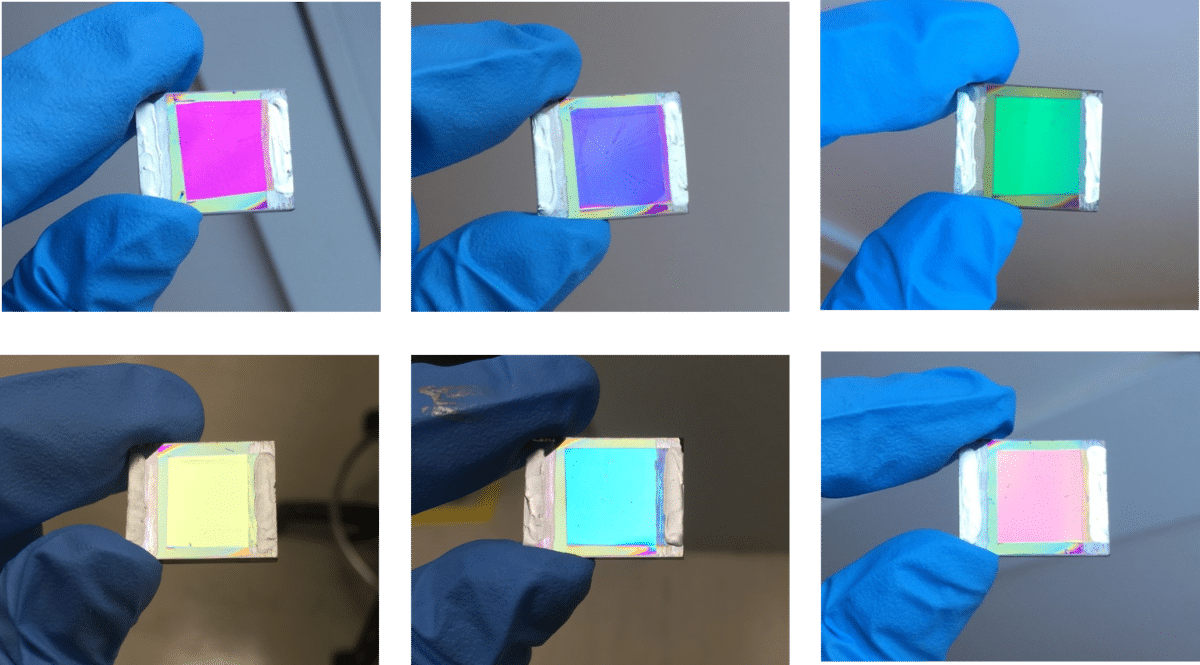The installation of PV devices based on perovskite solar cells in building-integrated photovoltaics (BIPV) or urban settings poses a series of challenges in terms of aesthetic integration and fabricating them with different colors, at a low cost, could be an optimal solution for their broad adoption and commercialization.
Scientists from Singapore's Energy Research Institute at Nanyang Technological University have identified two main approaches to fabricate colorful opaque and semitransparent perovskite solar cells for applications in urban environments and have discussed the advantages and disadvantages of both categories of techniques in terms of transparency, efficiency, commercial feasibility, scalability, and color tunability.
“The main requirements for efficient perovskite solar cell integration in an urban context include the possibility of color tunability maintaining high power conversion efficiencies, the simplicity and scalability of the fabrication processes, and transparency,” the research group explained, noting that there is an unavoidable trade-off between the aesthetic properties and light-harvesting in similar devices.
Internal modifications
One of the two approaches is based on the modifications of the perovskite cell's internal layers, such as the absorber, the electron transporting layers (ETLs), the hole transporting layer (HTLs), or the electrodes.
Specific methods that belong to this category include: working on the perovskite through compositional engineering or through tuning the thickness of the perovskite film; the alteration of the ETL or HTL by tinting or thickness variation or the incorporation of nanostructures, which the academics described as a promising method for good reproducibility and scalability without sacrificing the cell efficiency; the incorporation of photonic crystals in the ETL, which the academics claim to be particularly suitable to create bright colors; and the use of transparent electrodes to modulate the transmission or reflection spectral peaks.
“Among the designs based on internal modifications, tuning the transparent electrode thickness might be the simplest, most favorable, and effective way to tune the perovskite color without additional fabrication processes,” the scientists explained.
External modifications
The external approach includes the following techniques: the use of dielectric mirrors or colorful coatings to make colorful perovskite solar cells, although with limited light absorption and efficiency; the simple deposition of a colorful coating on top of the surface of semitransparent perovskite cells; the application of spin-coating pigments on the thin silver semitransparent electrode of a perovskite cell; and the use of narrow-bandwidth reflective filters (NBRFs) on the front of the Indium tin oxide (ITO)/glass layer.
“The external modifications lead to minimal limitations on the reproducibility, fabrication, and stability of the perovskite solar cells or semitransparent perovskite cells,” the academics explained. “The main limitation of this approach is the variation of the light absorption due to the additional coating.”
The addition of colorful coatings is considered the most promising external approach, as their integration is said to have a minimal impact on the cells' electronic properties and performance.
“The design considerations for colorful perovskite solar cells must include the application’s utility, location, and orientation together with power conversion efficiency and transparency requirements for specific applications,” the research group concluded.
All the techniques are described in the paper Colorful Perovskite Solar Cells: Progress, Strategies, and Potentials, published in the Journal of Physical Chemistry,
This content is protected by copyright and may not be reused. If you want to cooperate with us and would like to reuse some of our content, please contact: editors@pv-magazine.com.




By submitting this form you agree to pv magazine using your data for the purposes of publishing your comment.
Your personal data will only be disclosed or otherwise transmitted to third parties for the purposes of spam filtering or if this is necessary for technical maintenance of the website. Any other transfer to third parties will not take place unless this is justified on the basis of applicable data protection regulations or if pv magazine is legally obliged to do so.
You may revoke this consent at any time with effect for the future, in which case your personal data will be deleted immediately. Otherwise, your data will be deleted if pv magazine has processed your request or the purpose of data storage is fulfilled.
Further information on data privacy can be found in our Data Protection Policy.